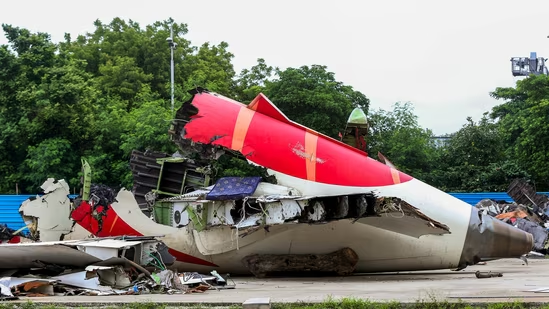
Air India
Ahmedabad, July 17, 2025 – As investigators pore over the tragic Boeing 787 Dreamliner crash of Air India Flight 171 on June 12, a revelatory Wall Street Journal report has surfaced, offering five unsettling new insights into the cockpit’s final moments.
1. Captain Manually Cut Off Fuel Flow
Analysis of the black‑box recording suggests the captain—Captain Sumeet Sabharwal—manually switched off the fuel-control switches for both engines shortly after takeoff. According to U.S. officials following the evidence, this was not a mechanical failure, but a deliberate action . Crucially, the switches were toggled off in quick succession, about one second apart , pointing toward human intervention rather than a glitch.
2. First Officer’s Panic vs Captain’s Composure
The cockpit voice recorder captured a stark contrast: as the first officer questioned the shutdown in panic, the captain remained unusually calm and controlled . Investigators believe this emotional disparity could be a key clue in assessing the captain’s mindset.
3. Swift Attempt to Recover Engines
Within 10 seconds of cutting fuel, the switches were turned back to “RUN.” Engines briefly relit, but the aircraft was too low and slow to regain altitude. The ram air turbine deployment confirmed power loss , and despite recovery efforts, the jet crashed into a hostel building, tragically killing 260 people .
4. Fuel Cutoff Timing and Sequence Raises Doubt
The rapid sequence—switches off one second apart, then back on 10 seconds later—is difficult to attribute to accident, especially given the mechanical locking mechanisms on these controls. U.S. experts warn such an operation resembles deliberate human action, since inadvertent activation would be very unlikely.
5. Possibility of Criminal Investigation
WSJ reports that U.S. authorities are contemplating whether the evidence warrants criminal prosecution—a move often pursued in similar aviation cases in the U.S. when deliberate or reckless actions are involved . Though India’s AAIB maintains the probe is ongoing and no definitive causal conclusion has been reached , international observers are closely watching.
What This Means
These revelations dismantle earlier reassurances that the jet’s systems and engines were mechanically sound. The AAIB preliminary report ruled out technical faults or maintenance issues shifting focus squarely to pilot actions. The JEET Team’s analysis of CVR data confirms human error or intentional act as potential triggers—not machinery failure.
Black-Box Data Speaks Loudly
Black-box data is central to modern crash probes. In this case, cockpit voice and flight data recorders captured two hours of audio and 49 hours of technical data . The dialogue revealing confusion and the manual fuel cutoff could be decisive in confirming whether this was an act of negligence, mental distress, or deliberate sabotage.
Pilot Mental Health & Context
Questions around Captain Sabharwal’s mental health have resurfaced. Some suggest he was near retirement and possibly under psychological distress. Both pilots had passed breathalyzer tests and showed no immediate sign of impairment , but there has been no public record of mental health screening before takeoff.
India and Global Safety Implications
In the U.S., cockpit image recording is debated as a tool for further transparency in such incidents . India may now reevaluate its aviation safety policies, especially in pilot screening, training, and cockpit surveillance protocols.
Awaiting Final Verdict
India’s AAIB is expected to release a comprehensive final report within a year of the accident . Meanwhile, families of victims, survivors, and aviation professionals await conclusive findings. One passenger, Vishwash Ramesh, miraculously survived but continues to cope with trauma and survivor guilt .
Conclusion
The WSJ’s revelations mark a pivotal moment: data suggests the crash may have been triggered by the captain’s direct actions, not mechanical failure. If confirmed, the episode will not only reshape the narrative around Flight 171 but could also trigger a broader overhaul in cockpit safety and oversight. As investigations deepen and global aviation authorities weigh in, the remains of Flight 171 may ultimately reshape the future of flight safety worldwide.